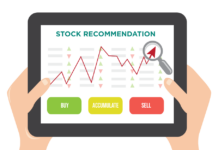The ongoing instability of the world banking sector will urge central banks to go slow on aggressive monetary policy. We can expect the rates to peak in the next couple of months.
And the world economy and stock market will take it with open arms. Generally, it is a good development, preaching out the probability of an improvement in the future outlook, right?
However, this case is a bit precarious because the central bank has no option but to reconsider its hawkish policy and maintain the rates high to curb inflation.
In 2022, the regulators started increasing interest rates in a street fashion, realising that high inflation was deeply rooted and uncontrollable.
The rates were steeply increased; Fed hiked by 475 bps in just 12 months, a historic jumbo. The banking sector had to pay the price of the monetary maven.
It took a toll on the system; SVB, Silvergate Capital, First Republic, Signature Bank, and Credit Suisse had to be bailed out.
Now, a rate hike is not an option in the hands of the regulator, a key weapon taken off the table. To presume that a change in monetary policy from hawkish to neutral in the coming months will be good for the market is a bit early to conclude.
We cannot expect the worst to be over because the economy may experience a significant slowdown, hurting inflation and a loss of confidence in the financial markets.
We cannot expect a U-turn in the stock market; however, we can be reassured that one of the villains, the hiking interest rate is in the last roll. In H2 CY23, the market will not have to be concerned about the trajectory of the future interest rate. Great!
And this view will grip stronger in CY24 as the market builds on the outlook that rates can moderate by 75 bps to 100 bps, supported by moderation in inflation. US CPI is expected to go sub 3% next year from 6% in Feb 2023.
The current question in the mind of the market is the risk of plausible further black swan-like events in the system. Post the corrective monetary actions, the market is still trading in a mixed trend with a negative bias.
Regarding the banking sector, given the remedy measures (additional funding and bailout) put in place by Fed and ECB, banks are in a safe space.
However, their rating had fallen due to a lack of business opportunity, systemic risk, high-interest costs, and mark-to-market losses. The performance of European banks continues to be stressed, and the spread (price) of credit default swaps (CDS) is rising.
Regarding non-banking sectors, it is very difficult to foresee the plausibility of a black swan-like event, and it is largely dependent on the company & sector-specific development.
And the chance of the current banking sector issue spilling over to other sectors is limited because of a general optimism stemming from a stable balance sheet and cash flow position post the fiscal and consumer spending since the pandemic.
However, their current revenue structure has weakened due to the risk of recession, high-interest rates, and inflation. Highly indebted companies and sectors are the riskiest. The crux is that inflation is forecasted to calm down in H2 CY23 and CY24, and it could happen rapidly given the lag effect of rate hikes to the ground economy, the opening of the Chinese economy, and ease in war.
It is predicted that rate hikes take 6 to 12 months to affect the economy. As rates are expected to peak and inflation to settle, the stock market environment is likely to be in a good position by next year.
A preliminary possibility is evolving that times will emerge to start capitalising from the chaos of the market. An investor who is able to implement the accumulation strategy in the next part of the year will be in a king position. Be ready with an eye on the opportunity! peaking rates and then manageable inflation.
First published in Economic Times









